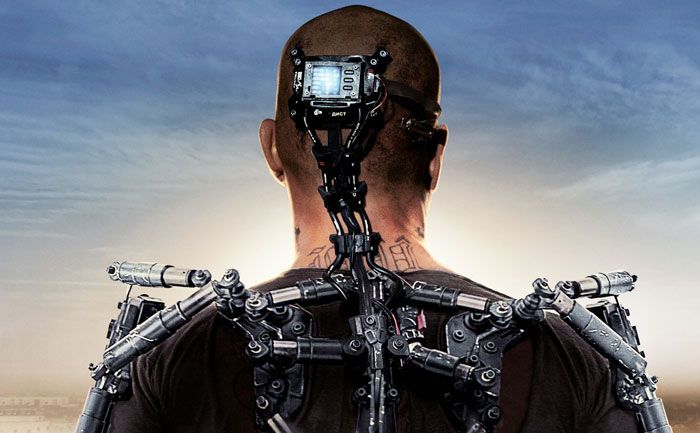Cyborg Warriors Could Be Here by 2050, Says DoD Study Group
Listen to “E188 Cyborg Warriors Could Be Here by 2050, Says DoD Study Group” on Spreaker.
Article by Kyle Rempfer November 28, 2019 (armytimes.com)
• In a study released by the U.S. Army’s Combat Capabilities Development Command, enhancements of the human ear, eye, brain and muscular system will be “technically feasible by 2050 or earlier.” The report: “Cyborg Soldier 2050: Human/Machine Fusion and the Implications for the Future of the DOD” was written by a study group from the DoD Biotechnologies for Health and Human Performance Council.
• While the Department of Defense anticipates comparisons to sci fi dystopian narratives in creating cyborg-style soldiers, the civilian healthcare market will drive the demand for these types of physical enhancements as advances in modern medical science within a “robust bio-economy that is at its earliest stages of development in today’s global market.”
• The Biotech team identified four capabilities as technically feasible by 2050: 1) ocular enhancements to imaging, sight and situational awareness; 2) muscular control through an optogenetic bodysuit sensor web; 3) auditory enhancement for communication; and 4) direct neural enhancement of the human brain for two-way data transfer which could revolutionize combat.
• According to the report, “This technology is predicted to facilitate read/write capability between humans and machines and between humans through brain-to-brain interactions.” “These interactions would allow warfighters direct communication with unmanned and autonomous systems, as well as with other humans, to optimize command and control systems and operations.”
• But the report also warns that the eventual integration of these “augmented human beings” into the general population “will lead to imbalances, inequalities, and inequities in established legal, security, and ethical frameworks.” The DoD study group suggests that the Pentagon brass consider the ethical impact upon Americans; the impact on allied operational forces; the development of a legal and ethical framework to ensure individual privacy and lessen organizational risk; to reverse the negative cultural impressions the public has of “cyborg” technologies; to gauge the impact of biotechnologies on combat tactics through wargames; and to open up commercial investment in cyborg technologies to keep up with the Chinese, and the long-term safety of these technologies.
• The DoD report assures the public that “The benefits afforded by human/machine fusions will be significant and will have positive quality-of-life impacts on humankind through the restoration of any functionality lost due to illness or injury,” while maximizing the safety of our society.
Ear, eye, brain and muscular enhancement is “technically feasible by 2050 or earlier,” according to a study released this month by the U.S. Army’s Combat Capabilities Development Command.
The demand for cyborg-style capabilities will be driven in part by the civilian healthcare market, which will acclimate people to an industry fraught with ethical, legal and social challenges, according to Defense Department researchers.
Implementing the technology across the military, however, will likely run up against the dystopian narratives found in science fiction, among other issues, the researchers added.
The report — entitled “Cyborg Soldier 2050: Human/Machine Fusion and the Implications for the Future of the DOD” — is the result of a year-long assessment.
It was written by a study group from the DoD Biotechnologies for Health and Human Performance Council, which is tasked to look at the ripple effects of military biotechnology.
The team identified four capabilities as technically feasible by 2050:
• ocular enhancements to imaging, sight and situational awareness;
• restoration and programmed muscular control through an optogenetic bodysuit sensor web;
• auditory enhancement for communication and protection; and
• direct neural enhancement of the human brain for two-way data transfer.
The study group suggested that direct neural enhancements in particular could revolutionize combat.
“This technology is predicted to facilitate read/write capability between humans and machines and between humans through brain-to-brain interactions,” an executive summary reads. “These interactions would allow warfighters direct communication with unmanned and autonomous systems, as well as with other humans, to optimize command and control systems and operations.”
Cyborg technologies are likely to be used among civil society as well over the next 30 years, the researchers noted.
FAIR USE NOTICE: This page contains copyrighted material the use of which has not been specifically authorized by the copyright owner. ExoNews.org distributes this material for the purpose of news reporting, educational research, comment and criticism, constituting Fair Use under 17 U.S.C § 107. Please contact the Editor at ExoNews with any copyright issue.
